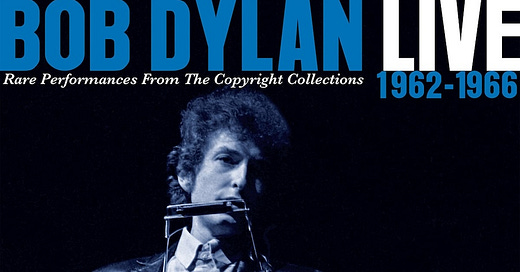Dylan Revisited: Rare Live 1962-66
Revisiting an epic two-disc collection of early live Bob Dylan recordings from quiet Greenwich Village folk cafés to a raucous Royal Albert Hall.
This is a series by DylanRevisited based on former Twitter threads, now available here in an easier to read and longer lasting format.
Live 1962-66 – Rare Performances from the Copyright Collections (henceforth Rare Live) is a valuable by-product of an admin job. Starting in 2012, Sony Music released a series of multi-disc compilations of Bob Dylan recordings in order to maintain their European copyright.
These 50th anniversary collections were extremely limited edition with just 100 copies made available of the first two volumes. Much like some of the more in-depth Bootleg collections, their existence is a rubber stamp, of interest to only the most dedicated Dylan fans.
Rare Live is a pared-down compilation of 29 live performances from the copyright collection. Originally just for the Japanese market, it inevitably found its way around the world as a more …




